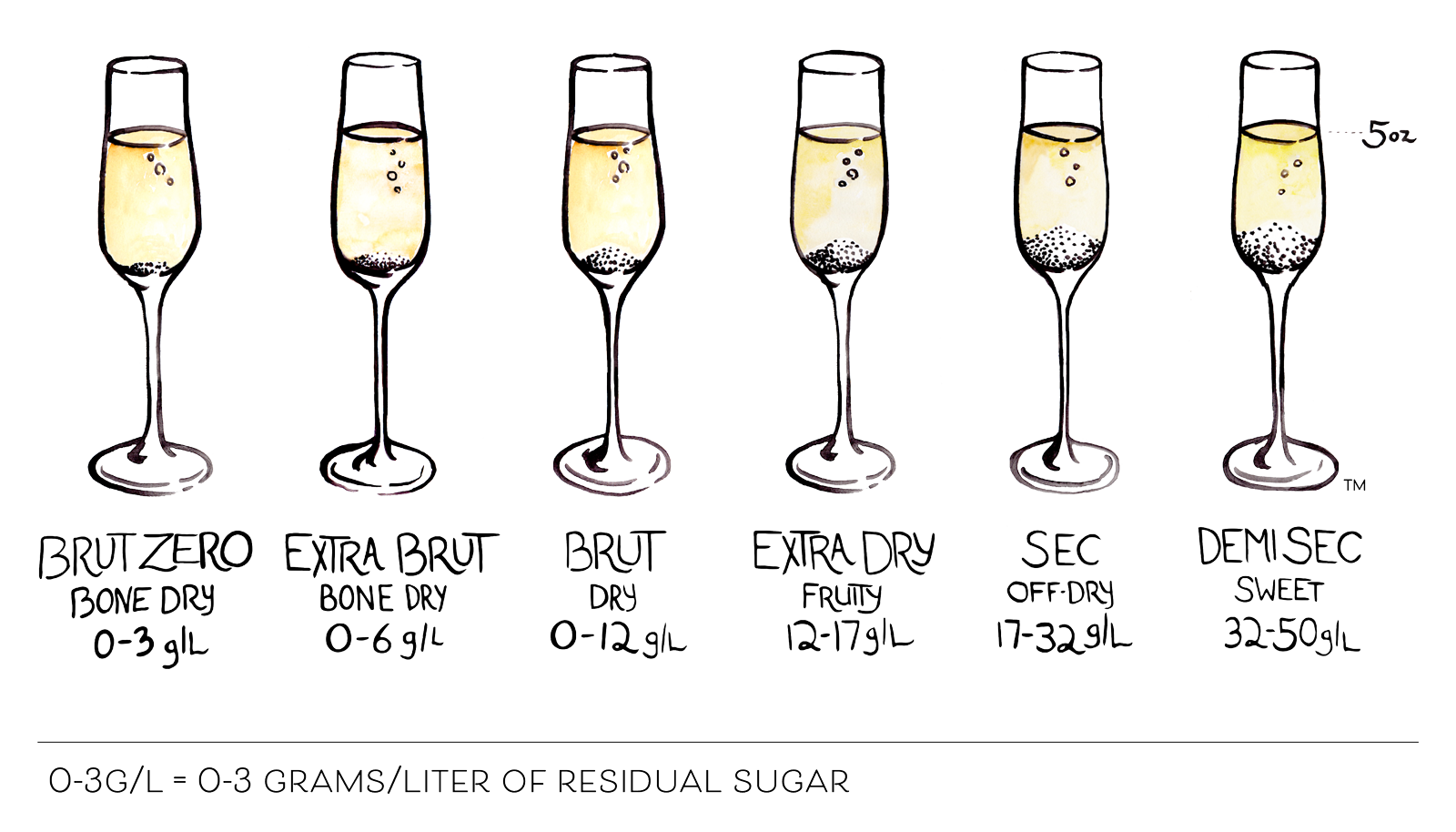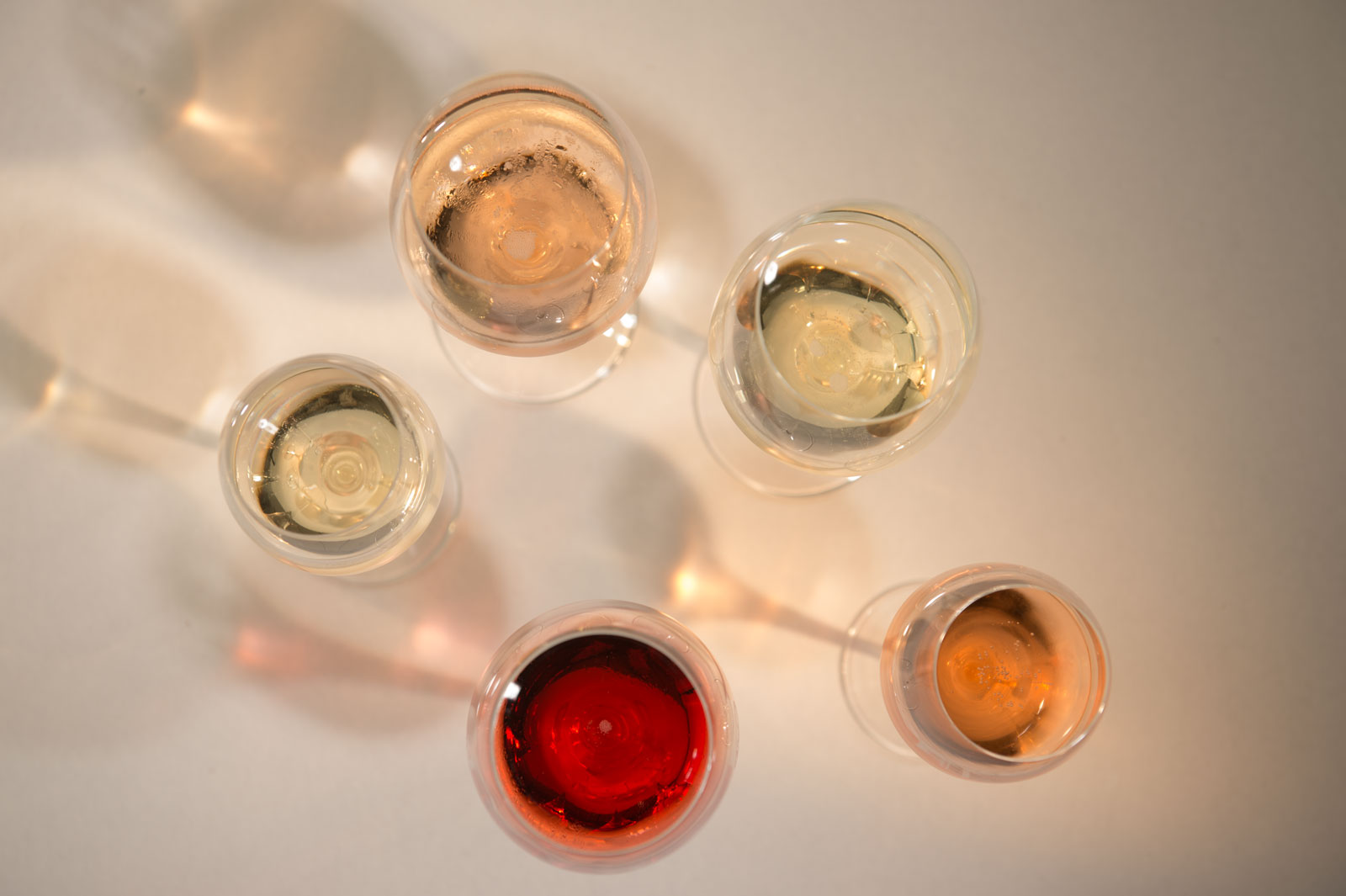Brut, Sec, Demi-Sec – what do these strange-sounding words mean? These are some of the terms used to describe the sweetness level in sparkling wines and Champagnes. Unlike other wines, you won’t hear terms like dry, semi-dry, semi-sweet, or sweet when you are checking out the label of your favorite bottle of bubbly.
The sweetness of traditional method sparkling wines is determined when sparkling wine makers add the dosage. Once we finish disgorging, the bottle of bubbly is free of yeast and ready for the finishing touches. However, in the process of removing the frozen yeast during disgorging, some of the sparkling wine shoots out of the bottle. This is actually rather fortunate as it allows the winemaker to put his final stamp on the wines. He will carefully create a liquor made of still wines and sugar to add in order to complete the flavor profile by “topping off” each bottle. This is the dosage; the amount of sugar in the dosage varies and dictates the sweetness of the wine. Our winemaking team does quite a bit of taste testing before they decide on the final dosage. While they might have a general idea as to how dry they would like the final bubbly to taste, there is a careful balancing act going on at the same time as they look for the right formula to balance the acidity and bring out all the amazing flavors.
Here are the sparkling wine terms that describe the various levels of sweetness in sparkling wines and Champagnes, from driest to sweetest.
Brut: 0-1.2% or 0-15 g/L residual sugar
“Brut” is a French word that means uncut, rough or raw referring to the natural or raw state in which a champagne or sparkling wine is bottled. This style of sparkling wine is the driest. Within this broad Brut category, there are some additional sub-categories often used to further depict the dryness of these sparkling wines.
- Extra Brut describes sparkling wines that have less than 6 g/L of residual sugar.
- Brut Zero or Brut Nature describes sparkling wines where no additional sugar is added in the dosage. These sparklers contain less than 3 g/L of residual sugar
ISC Brut Sparkling Wines:
- Traditional Method sparklers Brut, Brut Ombré Rosé, Brut Rosé de Saignée, Brut Zero, and Ensemble are all Brut sparkling wines.
- Ancestral Method aka Pét Nat sparklers: We do not add a dosage to our pét-nat wines so they technically fall under the Brut category as they all contain no sugar. Our pét-nat sparklers are Pét Nat Rosé, Pét Nat Vignoles, Illnatic, and Piquette.
Extra Dry: 1.2-1.7% or 12-17 g/L residual sugar
Extra Dry sparkling wines are a hint sweeter than Brut sparkling wines.
Sec: 1.7-3.2% or 17-32 g/L residual sugar
While the French term sec means “dry”, these sparkling wines aren’t the same as a dry still wine. You’ll notice the sweetness in these sparklers, but it is not an overwhelming sweetness. It is similar to what you might find in a semi-dry still wine.
ISC Sec Sparkling Wines: ISC Sec is a traditional method sparkling wine we make in this style.
Demi Sec: 3.2-5.0% or 32-50 g/L residual sugar
Demi Sec is a French wine term meaning “half-dry”. Demi-sec sparkling wines are typically slightly to medium sweet.
ISC Demi Sec Sparkling Wines: ISC Demi Sec Rosé is a traditional method sparkling wine that we make in this style.
Doux: more than 5% sugar or more than 50 g/L residual sugar
These are the sweetest of the sparklers. Interestingly, this style was the most popular sweetness level in Champagne during the 18th and 19th century. We currently do not have any ISC sparkling wines in this style.

